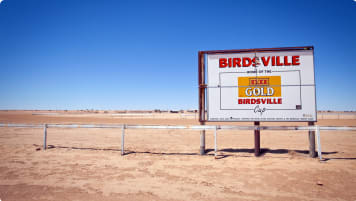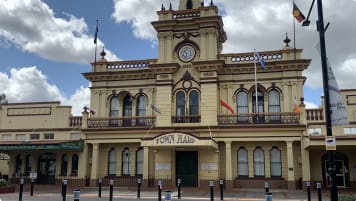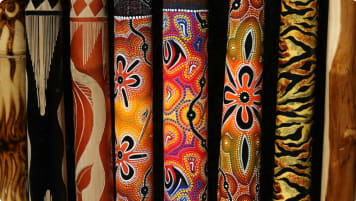Strahan and the Gordon River, Tasmania
Learn and explore Strahan and the Gordon river on Tasmania's west coast on a small group tour for senior travellers. This 16 day is for active couples and solo travellers who seek to learn as they travel. View some of the Best tours of New Zealand and Australia.
12 May 20 · 5 mins read
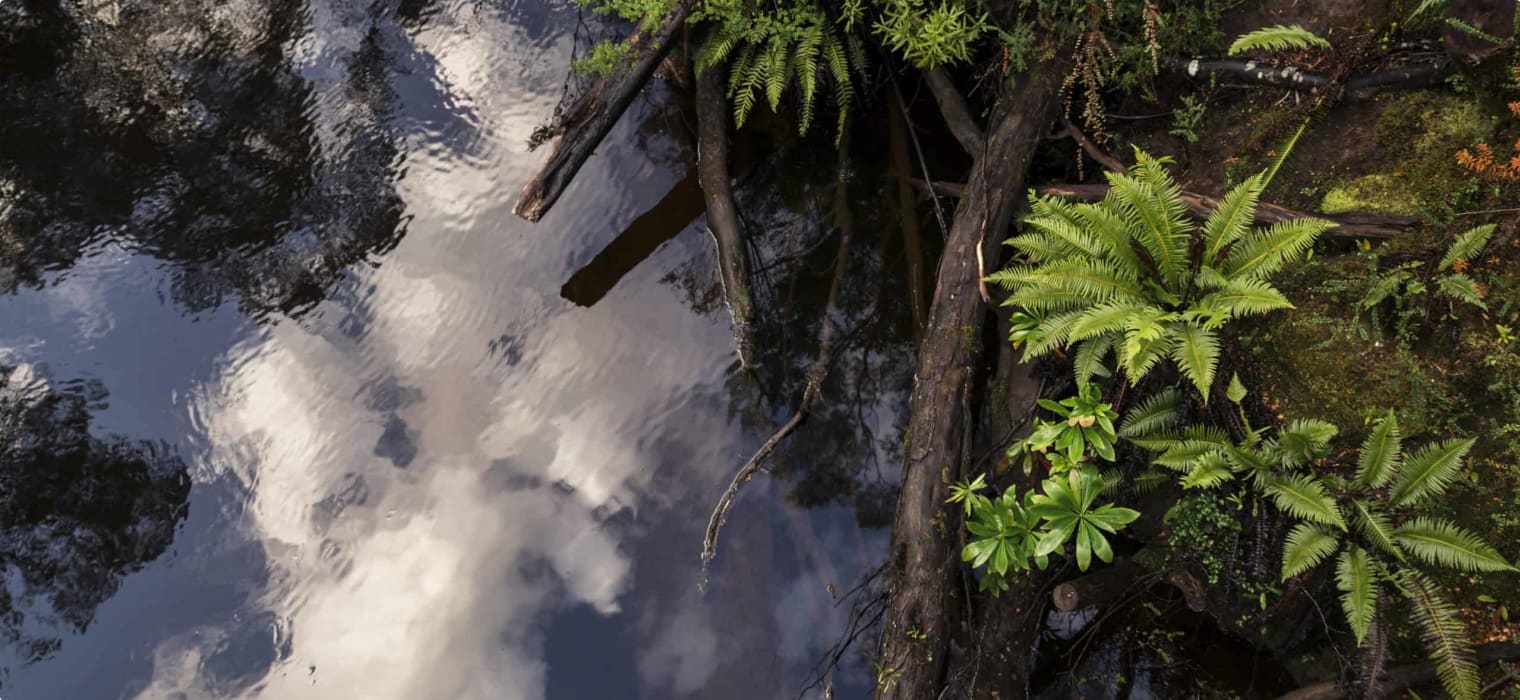
Strahan and the Gordon River, Tasmania
A port town on Tasmania‘s west coast, Strahan is the gateway to two of the highlights of our Tasmania tour: the convict settlements of Macquarie Harbour and the pristine wilderness of the Franklin-Gordon Wild Rivers National Park.
History of Strahan:
Strahan sits on the edge of Macquarie Harbour, a large natural harbour on the west coast of Tasmania. It was first used by European settlers as a place of convict imprisonment. Though convicts were only imprisoned in Macquarie Harbour for a little over ten years (1821-1833), it developed a reputation as the harshest settlement in the Australian colonies. The site continues to loom large over the Australian imagination, immortalised in novels such as Marcus Clarke’s For the Term of His Natural Life and Booker-prize winner Richard Flanagan’s Gould’s Book of Fish.
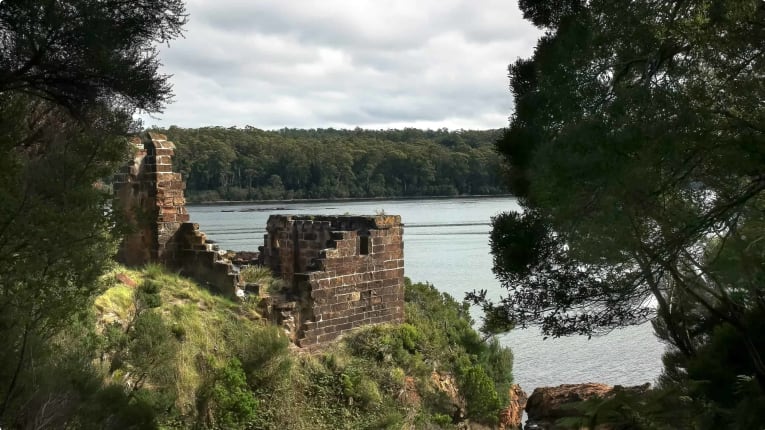
Macquarie Harbour was the perfect location for a penal station. On the remote west coast of Tasmania, it was far from the new town of Hobart, and even further from the main settlement in Sydney. Moreover, the harbour was linked to the sea only through a narrow strait known as ‘Hell’s Gates’, an apt name for the dangerous tidal currents that killed many convicts before they even arrived at the station; while the mainland behind was a largely uncharted mountain wilderness. The surveyor who mapped Macquarie Harbour concluded that escape was ‘next to impossible’.
Convicts were sent to Macquarie Harbour for a variety of reasons. While re-offenders who committed crimes in the colonies (including theft, robbery, fraud, and absconding from prison) were the majority, the station also held prisoners sent straight from the hulks in Britain. In total, just over 1150 prisoners served time at Macquarie Harbour, fewer than 30 of whom were women. The main settlement was on Sarah Island, with nearby Grummet Island used for solitary confinement.
The reputation for brutality seems to have been justified: floggings were high here compared to other locations, particularly in the early years. As Sarah Island could not produce food, supplies had to be imported, and malnutrition and scurvy were common. At the same time, the colony was a highly functioning and profitable shipyard, with convicts felling trees from the Gordon River area for building ships.
Despite its remoteness, several convicts managed to escape Sarah Island. The bushranger Matthew Brady successfully escaped to Hobart in 1824, while ten convicts were able to escape in 1834, by stealing an unfinished ship, the Frederick, and sailing it to Chile.
The penal station was closed down in 1833, with the remaining convicts moved to Port Arthur.
The town of Strahan was founded in 1880, established as a port for the growing inland mining fields of the west coast, as well as the timber industry. It was linked to Queenstown by the Abt railway in 1897. Fishing on a commercial scale was established in 1956.
Today, Strahan is a working fishing town and centre of the tourist trade. The population is around 708, but expands considerably in the peak summer months. It provides an ideal launching spot both to learn about the convict history of Sarah Island, and to explore the rugged coastline and mountain wilderness of Tasmania’s west.
Franklin-Gordon Wild Rivers National Park:
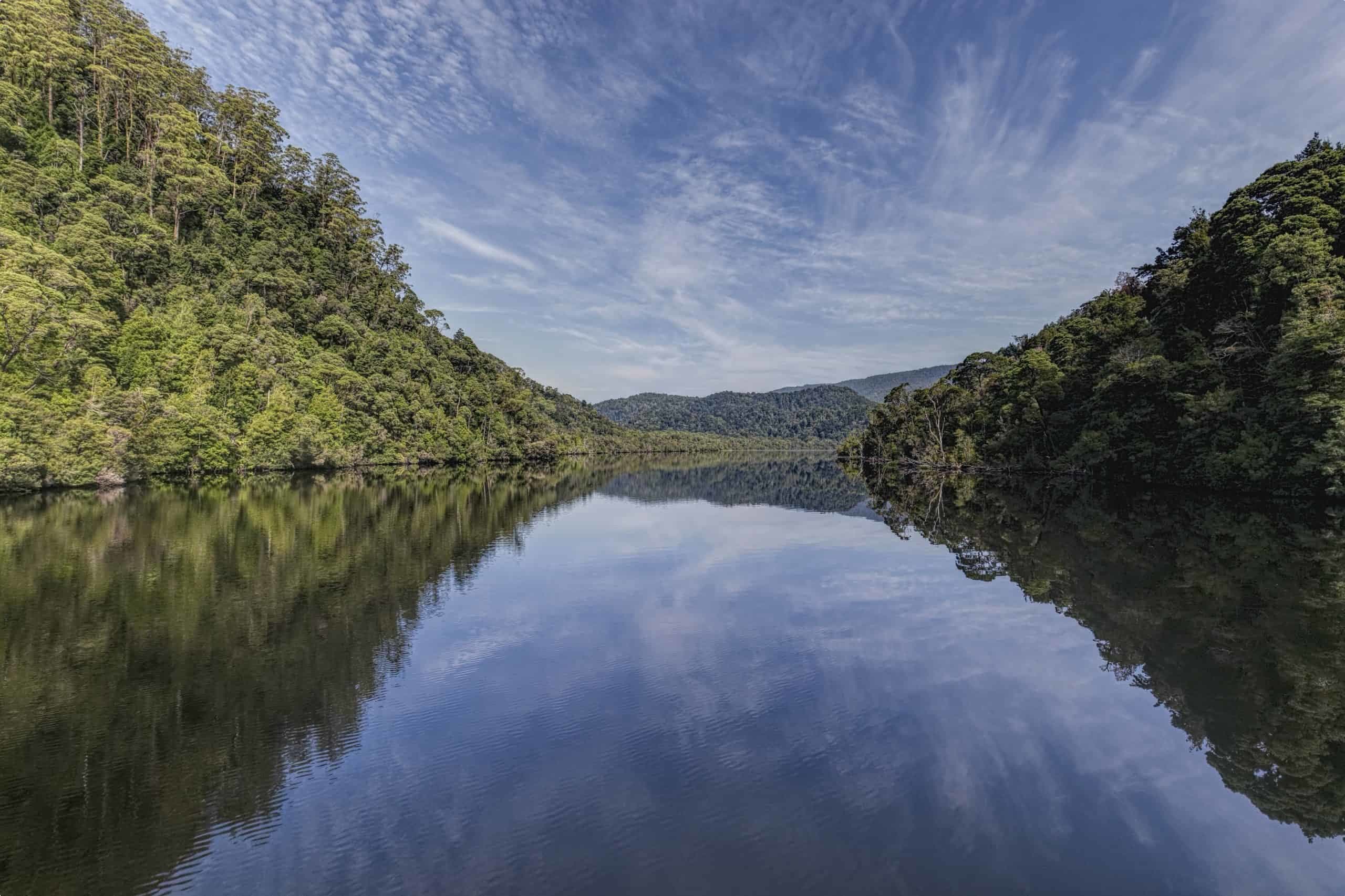
The Franklin-Gordon Wild Rivers National Park preserves the catchments of the Franklin, Olga and Gordon Rivers, and is as rugged and wild as its name suggests.
The rugged landscape was carved by ancient glaciers, forming the many creeks that twist through steep rock gorges on their way to forming the powerful Franklin and Gordon Rivers. Located in the wettest part of Tasmania – with an annual rainfall of over 1900mm – the park supports a range of flora, including 3000-year-old Huon pines, wet temperate rainforest, and eucalypt forest. These form habitats for a wide variety of native animals, including the Tasmanian devil, spotted-tail quoll and eastern quoll.
The Franklin-Gordon national park marks the southernmost extent of human occupation during the last Ice Age. The area continues to be of great spiritual importance for local Aboriginal people, and number of sites – including Kutikina Cave – have been returned to the Aboriginal community under the Aboriginal Lands Act 1995.
For many Australians, the Franklin and Gordon rivers are best known as the site of the largest conservation battle in Australian history. In 1978, the Tasmanian government announced its intentions to dam the Gordon River at a site known as Gordon-below-Franklin, for the purpose of generating hydro-electricity. The dam would have flooded the Franklin river, thus destroying a large wilderness area.
In response, a movement – led by the Tasmanian Wilderness Society – emerged to stop the dam. With support from people all over Australia, members of the Wilderness Society, began a blockade at the Franklin River, lasting three months and drawing around 2500 people.
In 1982, the Franklin and Gordon Rivers – along with Cradle Mountain and a number of other wilderness areas on Tasmania’s West Coast – were listed as a UNESCO World Heritage Site. The following year, Prime Minister Bob Hawke passed legislation to protect the Franklin River and other Australian UNESCO World Heritage Sites.
Despite the federal legislation, the Tasmanian government continued to build. In May 1983, the federal government took the state government to the High Court to force them to stop work. The High Court decided in favour of the federal government, and the Franklin was conserved as the Franklin-Gordon Wild Rivers National Park.
Today, the National Park is a major draw for visitors to Tasmania. White-water rafting on the Franklin River is an iconic Tassie adventure activity, while the less adventurous can see the Gordon River on a cruise leaving from Strahan, or take a short walk from the Lyell Highway.
Tour of the Gordon River and Strahan:
Odyssey Traveller visits the Gordon River and Strahan as part of our tour of Tasmania‘s wildlife and history. Beginning and ending in Hobart, our Tasmania tour begins with a day trip to Port Arthur. We then travel up the east coast – stopping for a day tour of Maria Island – and visit the dramatic coastlines of Wineglass Bay, Coles Bay, and the Freycinet Peninsula.
Heading inland, the tour stops in Launceston, before exploring the rugged and pristine west coast. We see the glacial lakes (including Dove Lake) of Cradle Mountain National Park, before our stay in Strahan. After Strahan and the Gordon River, we head to Lake St Clair, before returning to Hobart, where we mark the last day of the guided tour with a trip to Bruny Island.
Every Odyssey Traveller tour is designed especially for mature and senior travellers, who seek an authentic and informed experience of their holiday destination. Led by an experienced tour operator, our guides are chosen for their in-depth knowledge of the history and culture of the places we visit. While we take you to the main tourist attractions, we also go out of our way to get off the beaten path and leave plenty of time for independent exploration and adventure.
The price of an Odyssey guided tour includes hotel accommodation, entrance to attractions, and several group meals – breakfast, lunch, and dinner. For more information on our Tasmania tour itinerary, click here; and click here for more on our Australia tours.

Articles about Australia published by Odyssey Traveller:
For all the articles Odyssey Traveller has published for mature aged and senior travellers, click through on this link.
External articles to assist you on your visit to Adelaide and Tasmania:
Related Tours
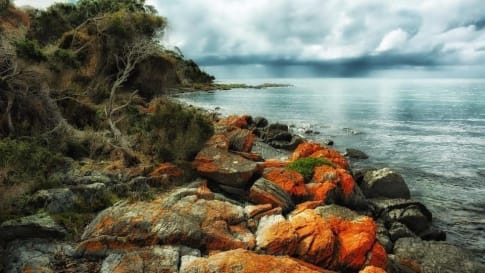
19 days
Jan, Feb, Mar, Apr, Sep +2Discovering Tasmania’s Wildlife
Visiting Tasmania
Small group tour of up to 15 mature and seniors travellers visiting and learning about Tasmania's wildlife and history. Visit Maria Island, Freycinet peninsula, Cradle Mountain, Strahan, Lake St Clair and Bruny Island over 16 days.
From A$10,450 AUD
View Tour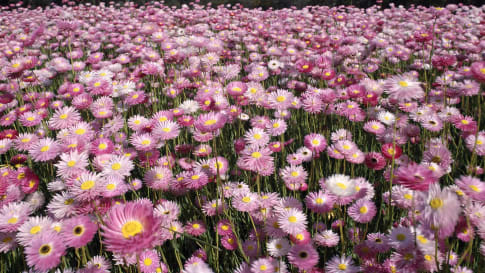
15 days
Aug, SepWildflowers tour of Western Australia
Visiting Western Australia
Escorted small group tour for senior and mature travellers as a couple of solo traveller. Upto 12 people of WA's Wildflower regions including Esperance and the Fitzgerald river National park. Local guides and program leader share knowledge about this fascinating region whilst in bloom.
From A$11,450 AUD
View Tour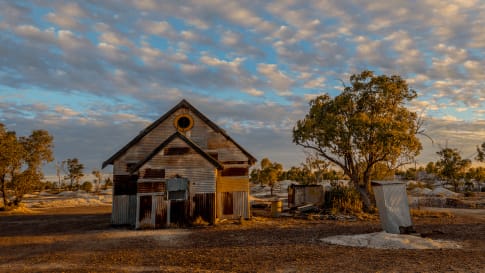
15 days
Mar, Apr, May, Jul, Aug +2Small group tour of outback Queensland
Visiting New South Wales, Queensland
To Dubbo and back, this small group tour takes you to learn about the Brewarrina fish traps, we travel high up into North Queensland to see the Dinosaurs of Winton and incredible Aboriginal rock art at Cathedral gorge and learn about opal mining and the history of Lightning ridge.
From A$9,350 AUD
View TourArticles
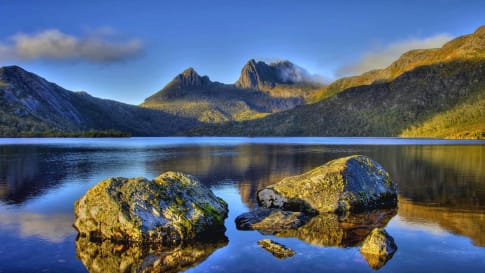
Cradle Mountain, Tasmania
One of Tasmania's most iconic natural wilderness destinations. Explore Cradle mountain on a seniors small group tour of Tasmania designed for active couples and solo travellers or select another iconic Australian or New Zealand tour.
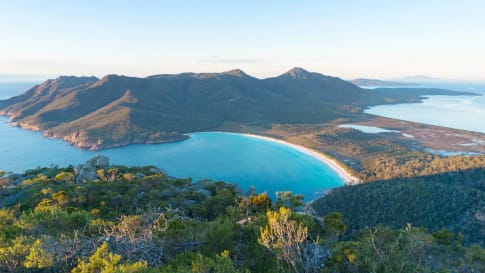
Freycinet Peninsula, Tasmania
Small group tour of the Tasmanian wilderness for senior travellers. This tour for active couples and solo travellers explores Wineglass Bay on the Freycinet Peninsula is one of the jewels of Tasmania's east coast, walking a section of the bay of fires walk and learning about Aboriginal history.
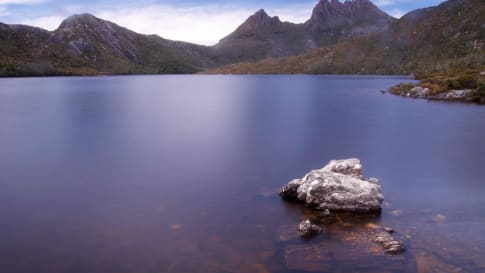
Lake St Clair, Tasmania
Australia's deepest lake; Lake St Clair formed by ice during several glaciations over the past two million years. Visit and learn on a escorted small group tour of Tasmania for seniors. For active couples and solo travellers exploring Australian wilderness.
